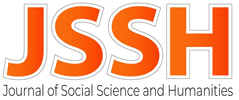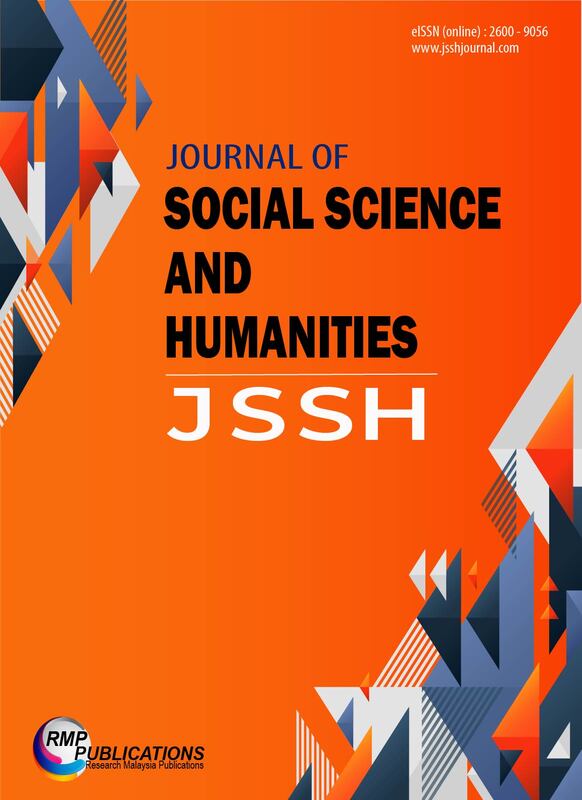Journal of Social Science and Humanities / Author Guideline
|
Journal of Social Science and Humanities publishes regular research articles, reviews and short notes. We encourage researchers to publish their theoretical and empirical results in as much detail as possible.
Contributions should fall within the scope of the journal outlined in the statement of Aim and Scope. Publication Frequency The journal is published two times in a year: in June and December. The publication schedule is strongly followed. Article Processing Fee All articles published in Journal of Social Science and Humanities are published in full open access. In order to provide free access to readers, and to cover the costs of peer review, copyediting, typesetting, long-term archiving, and journal management, an article processing charge (APC) of USD 80 applies to papers accepted after peer review. Manuscript Submission Journal of Social Science and Humanities accepts manuscripts prepared in the Microsoft Word (2003 or above) submit via email at [email protected]. Manuscript Template Authors may download a MS Word template by clicking here. Types of Articles The journal welcomes submission of full-length research articles, review articles, and short notes. General Manuscripts submitted to our journals must be written in English. Papers accepted for publication vary from 5 to 30 pages in two-column format (at least 3000 words but no more than 15000 words, inclusive of references). The main text usually can be divided into separated sections, organized by Introduction, Materials and Methods, Results, Discussion, Conclusion, Acknowledgement, Conflict of Interest, Appendix and Reference. Paper Title A title of no more than 20 words should be brief, specific, and informative. Author Details Full name for all authors should be given; The names of multiple authors are separated by a comma; Provide the full affiliation for each author including academic affiliation (or postal address), city, postcode, country, e-mail(optional); If multiple authors have contributed to the article, details of the corresponding author should be clear. Email address is compulsory for the corresponding author. Abstract The abstract should be written as a continuous paragraph with 200-350 words and recapitulatively state the background of the research, purpose, methodologies, principal results, major conclusions and its contributions to the field. It should emphasize new or important aspects of the study. Research limitations/implications, practical implications, and social implications should also be included, if relevant to your manuscripts. Keywords 3-10 keywords which can accurately reflect the theme of the article should be included for indexing. Introduction Provide a brief overview of the scope and relevance of the research, especially with regard to previous advancements in related fields Materials and Methods Present the research design, research type, research duration, inclusion/exclusion criteria, choice of subjects, etc. Describe the methodology completely, including sample collection, processing, lab analysis, statistical tests used for data analysis etc. Use section headings/subheadings in a logical order to entitle each category or method . (e.g. 1, 2; 1.1, 2.1; 1.1.1, 2.1.1…etc) Results Present and illustrate your findings objectively and concisely, if appropriate, with figures/ tables. In the main text, describe each of your results by a particular observation. Discussion Provide an interpretation of your results and make comparisons with other studies. The significance of findings should be clearly described. If your results differ from your expectations, explain why that may have happened. If your results agree, then describe the theory that the evidence supported. Conclusion The main conclusions of the experimental work should be presented. The contribution of the work to the scientific research and its economic implications should be emphasized. Appendix An appendix may be included (and is often helpful) in mathematical or computational modeling. Acknowledgements The acknowledgements section is where you may wish to thank people indirectly involved with the research (e.g., technical support; loans of experimental facilities; comments or suggestions during the creation of the manuscript). However, it is important that anyone listed here knows in advance of your acknowledgement of their contributions. Do not include dedications. TABLE Title Every table must have a unique title placed at the top. Titles should be clear and concise, and they should not be complete sentences. TABLE Format Table tools in Microsoft Word are strongly recommended for inserting a table. It’s necessary to avoid tables created with the tab key. TABLE Numbering & Citation Tables in the main body of the text should be numbered and cited consecutively according to their appearance in the text. FIGURE Caption Each figure should have a caption. The caption should be concise and typed separately, not on the figure area; If figures have parts (for example, A and B), make sure all parts are explained in the caption. FIGURE Numbering & Citation All figures are to be sequentially numbered with Arabic numerals. Figures should always be cited in text in consecutive numerical order. FIGURE Resolution Figures must be created at a minimum resolution of 300 dpi. For fuzzy or jagged figures, authors are required to replace it or send the original figure file to us for reproduction. EQUATION Format The equation number should be placed in parentheses to the right of the equation. E.g. Hn+1(1/n+1, 1/n+1, …, 1/n+1) (1); Do not create equations as pictures. Use MathType or insert symbols as normal text. EQUATION Numbering & Citation Equations should be numbered consecutively with Arabic numerals to avoid ambiguities, if they will be referred to in text. Citation for an equation should be made by using "(1)," not "Eq. (1)" or "equation (1)," except at the beginning of a sentence: "Equation (1) is…" REFERENCES Summary (1). All sources cited in text must appear in the reference list and all items in the reference list must be cited in text. (2). All references should be listed numerically in the order they've been cited within the paper. At the beginning of each reference, the bracketed number should be included. REFERENCES In-Text Citation Format References are simply cited with the consistent reference number in square brackets. Do not set references number as superscript number. Do not use "Ref. [3]" or "Reference [3]" except at the beginning of a sentence, e.g. "Reference [3] shows …" A. Single Reference If the author's name appears in the text, place the reference number immediately after the name. E.g. Peter[10] found an innovative scientific phenomenon. B. Multiple References (1). Put two numbers in numerical order and separate them by commas but no spaces. E.g.: [2,3] or [2], [3] (2). Indicate three or more consecutive reference numbers by using the following format. E.g.: [1], [3], [5]; [1] – [5] or [1, 3, 5]; [1-5] List of REFERENCES Authors are requested to check all references for completeness, including author names, paper title, journal heading, Volume, Number., pages for journal citations, Year, DOI (or URL if possible). (Please note that the DOI should be placed after the URL and end with a period.) Journals All author names, "Title," Journal title, vol., no., pp. xxx–xxx., Year, DOI (or URL) e.g. [1] Clarke A., Mike F., S. Mary, "The Use of Technology in Education," Universal Journal of Educational Research, vol. 1, no. 1, pp. 1–10, 2015. DOI: 10.13189/ujer.2015.010829 Books All author names, "Title of chapter in the book," in Title of the Published Book, (xth ed. if possible), Abbrev. of Publisher, Year, pp. xxx–xxx. e.g. [1] Tom B, Jack E, R. Voss, "The Current Situation of Education," in Current Situation and Development of Contemporary Education, 1st ed, HRPUB, 2013, pp. 1-200. Conference Papers All author names, "Title," Conference title, (location of conference is optional), (Month and day(s) if provided) Year, pp., (DOI or URL, if possible) e.g. [1] David H., Tim P., "The Use of Technology in Teaching," The Third International Conference, LA, USA, Jul., 2013, pp. 19-23. (The year may be omitted if it has been given in the conference title) (DOI or URL, if possible). Websites All author names, "Page Title." Website Title. Web Address (retrieved Date Accessed). e.g. [1] Partson K., Joe L., "The Use of Technology in Teaching", US News, http://www.hrpub.com (accessed Jan. 1, 2013). |



